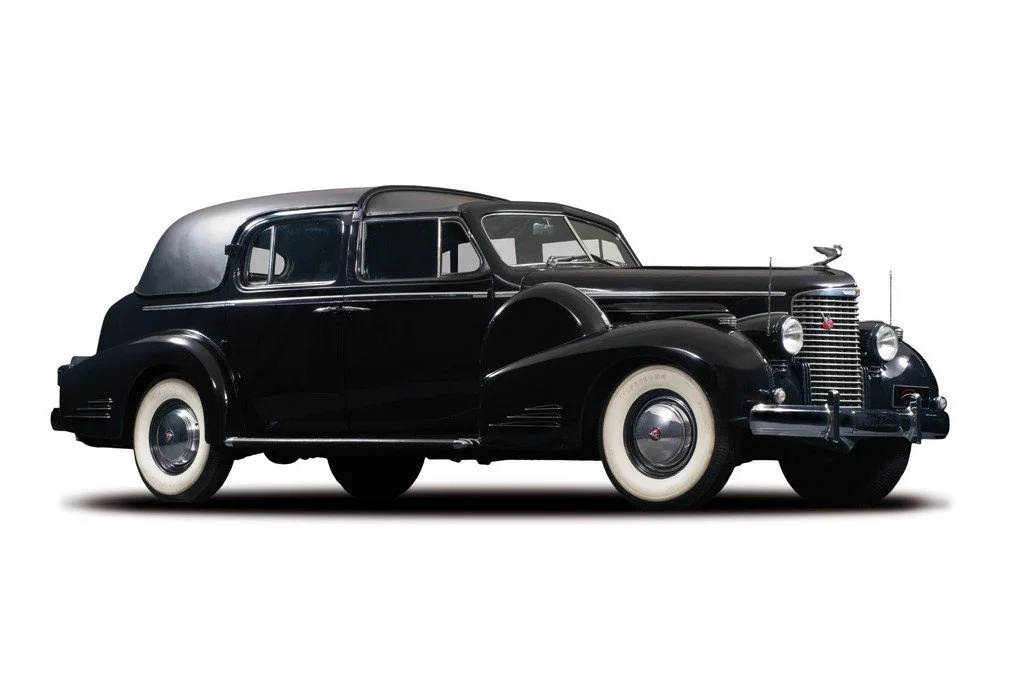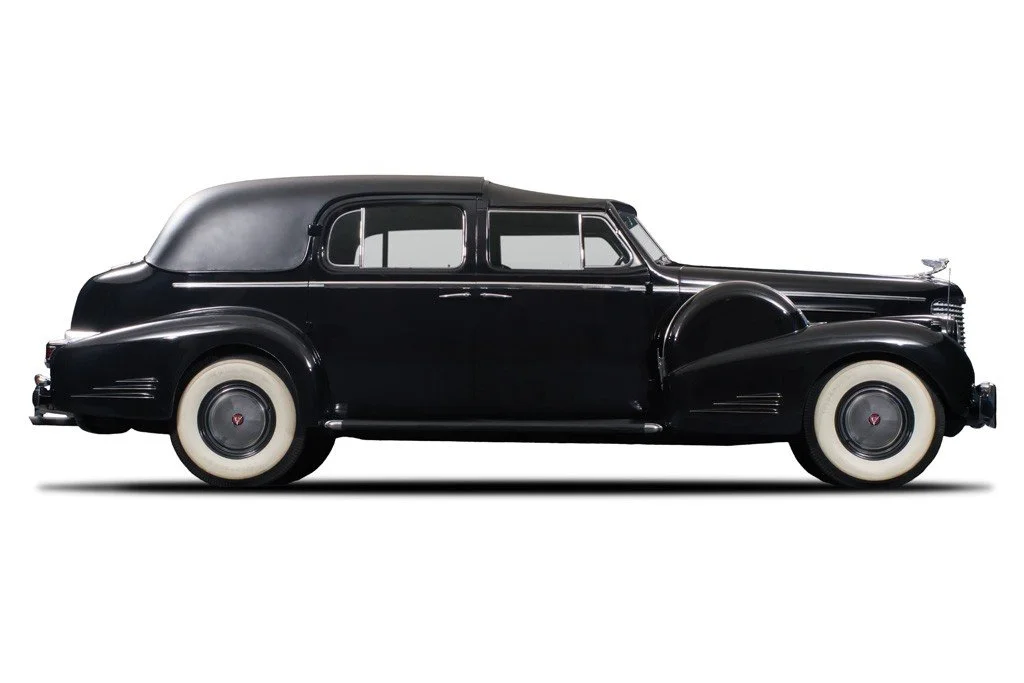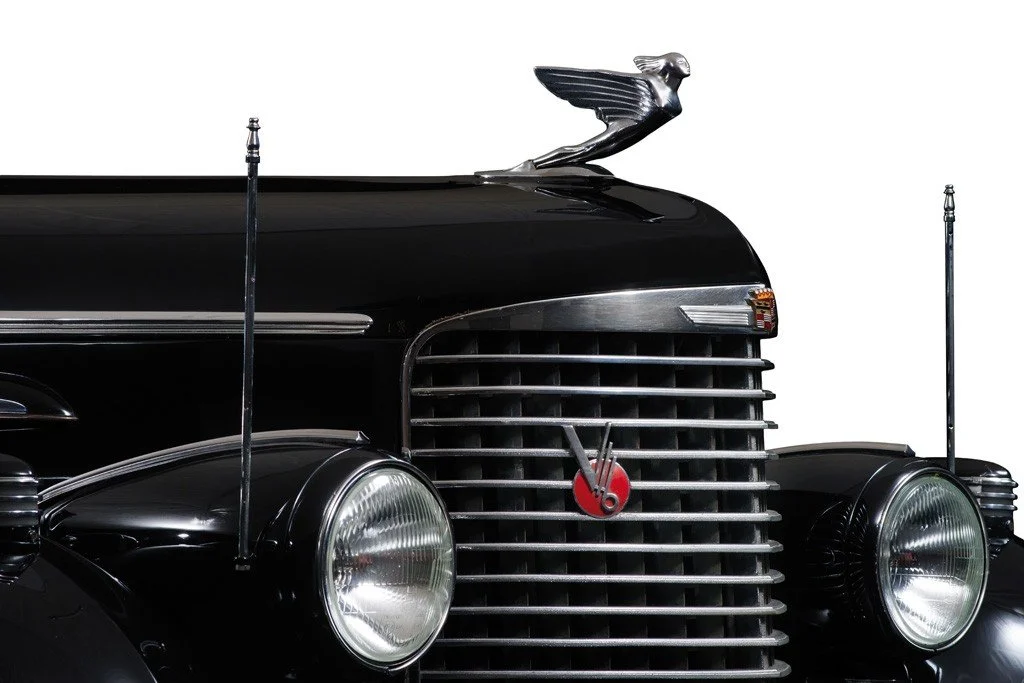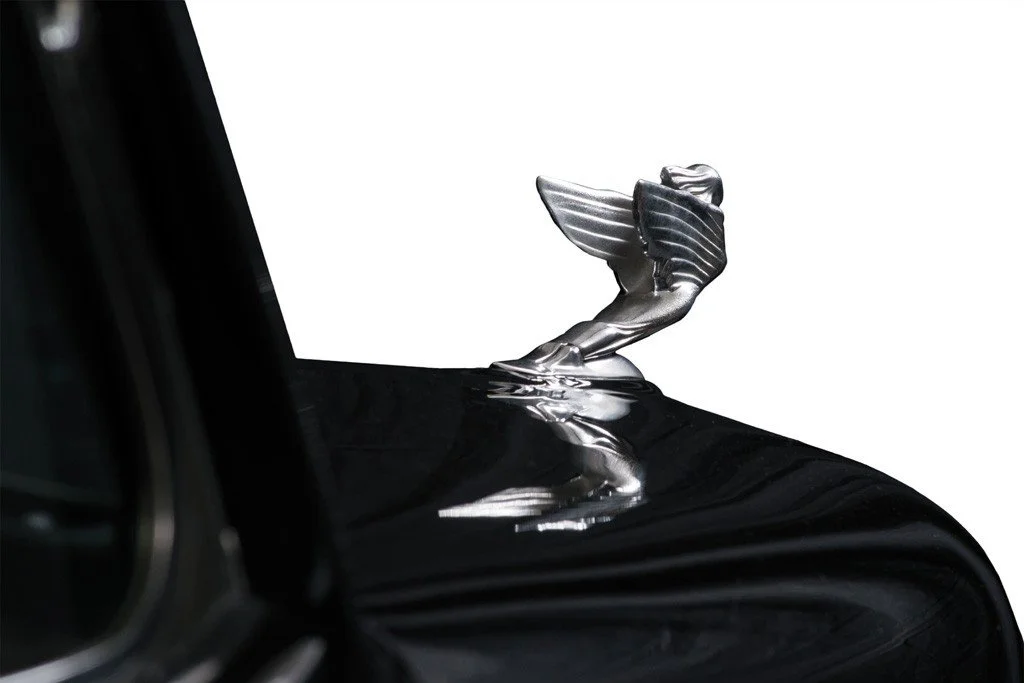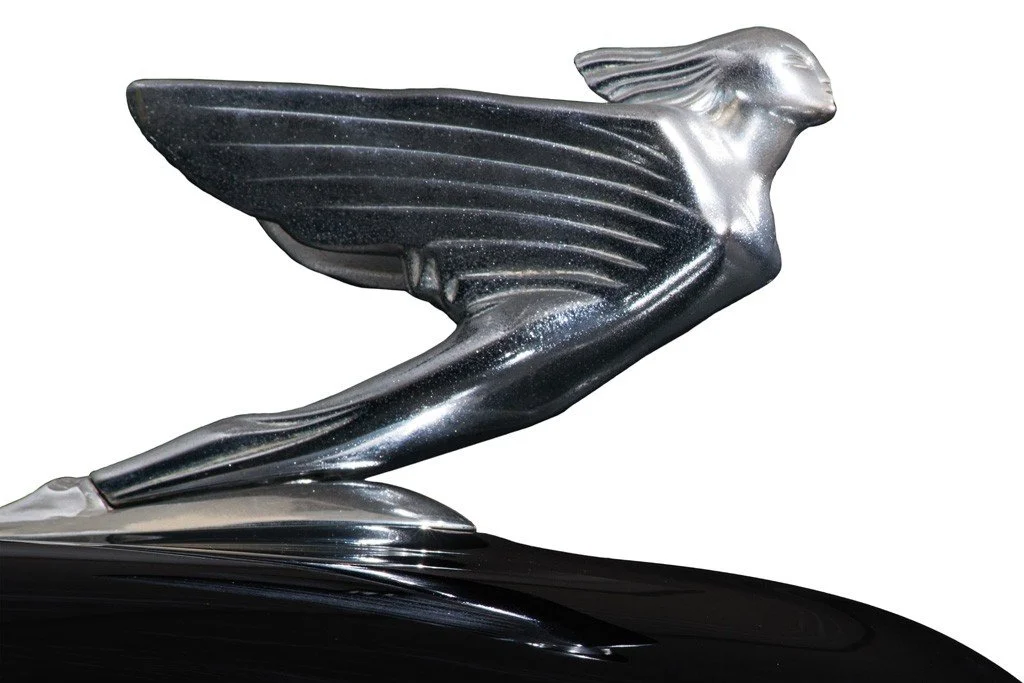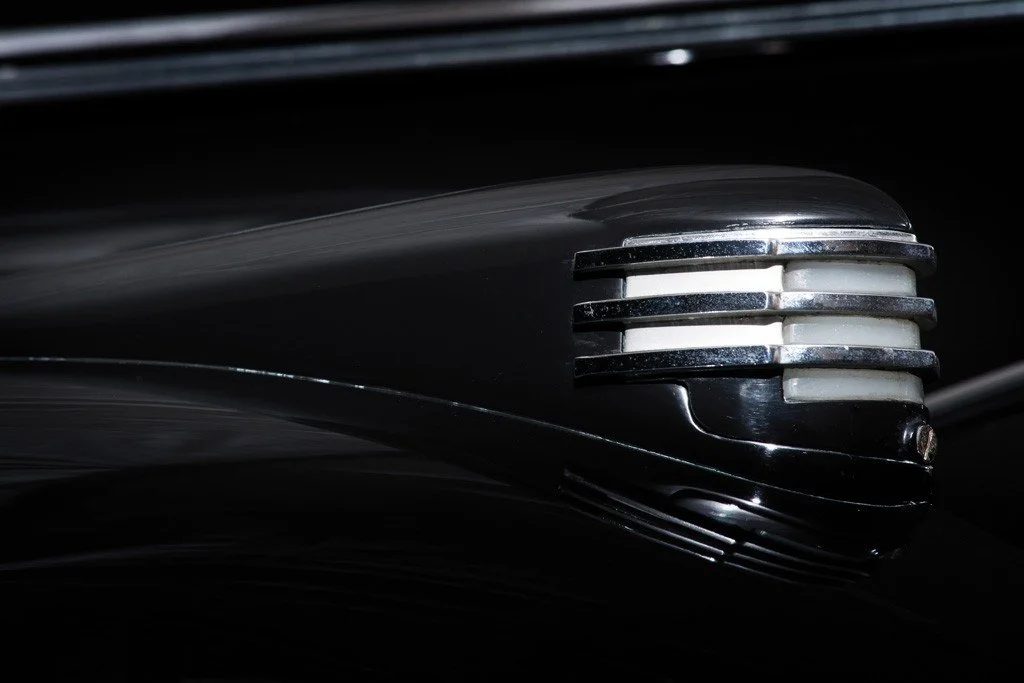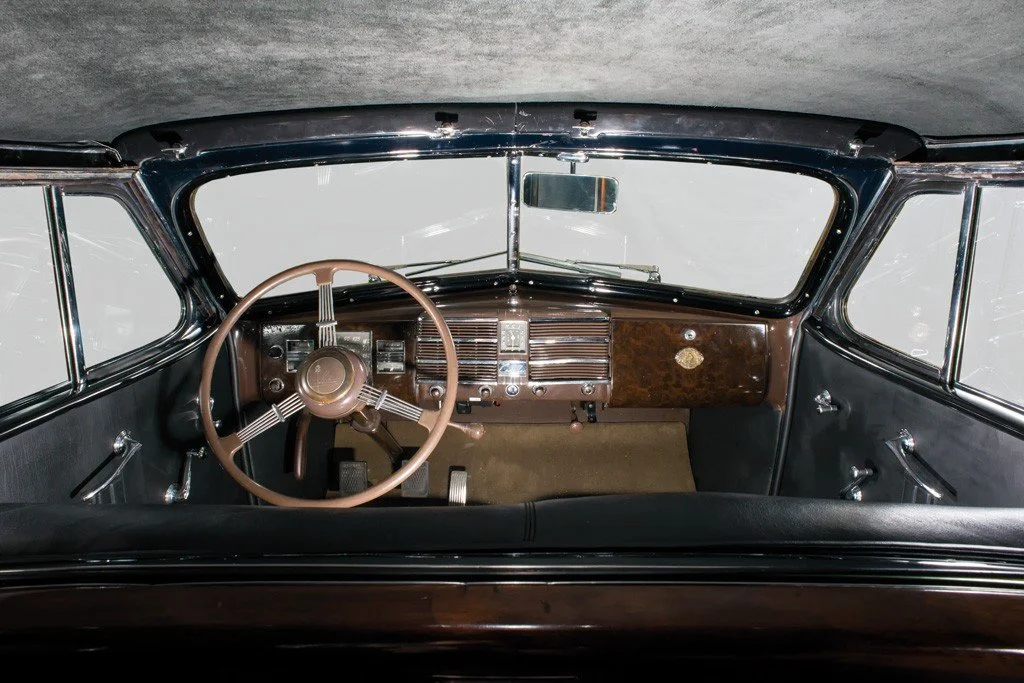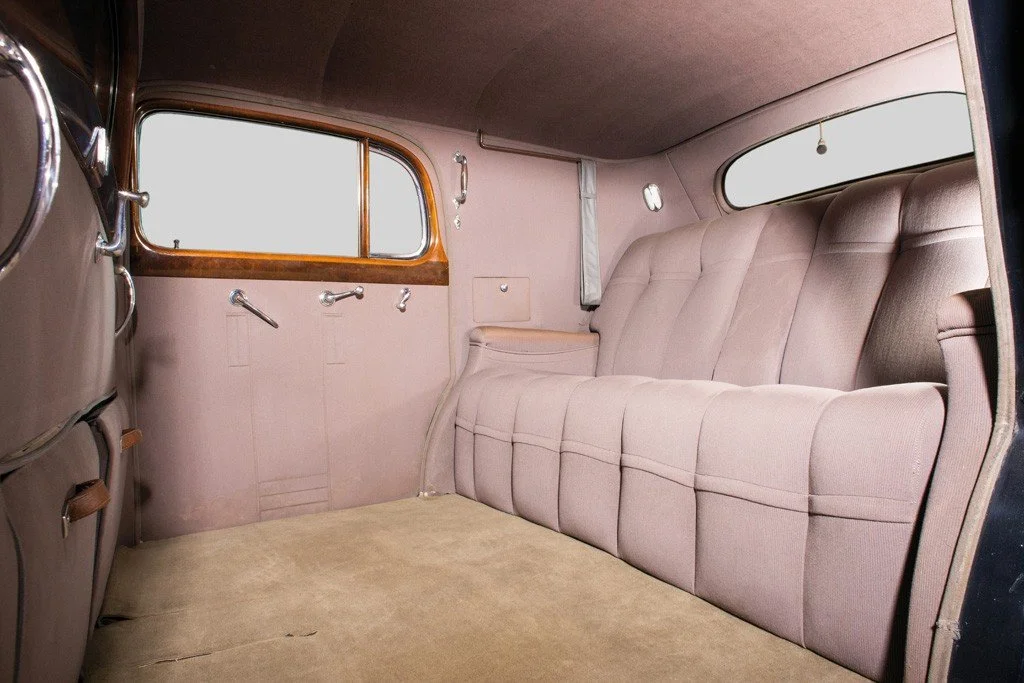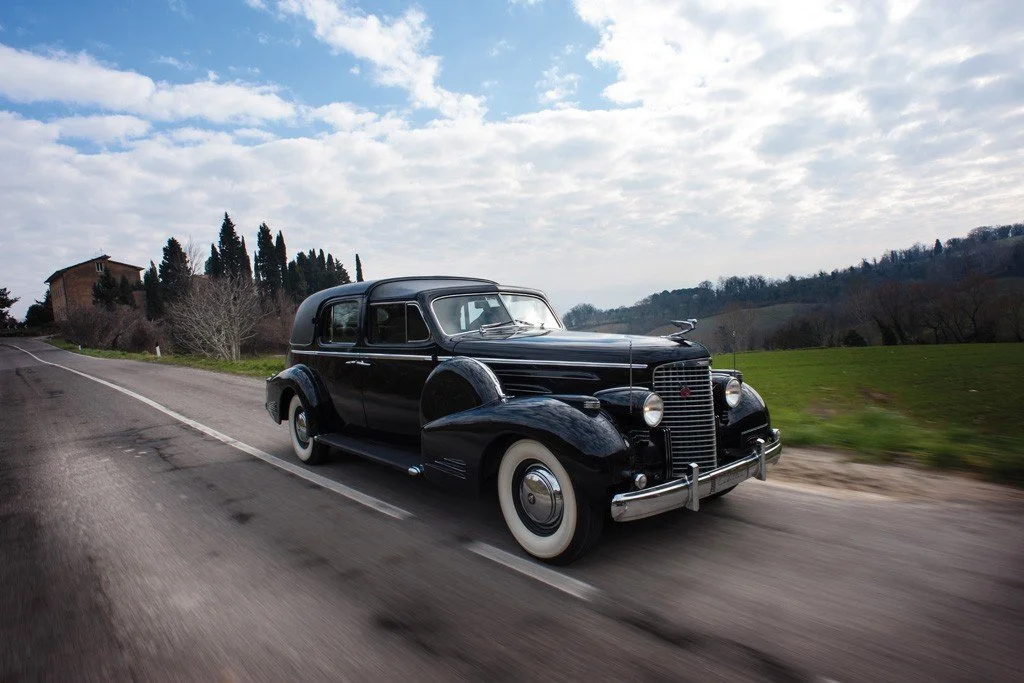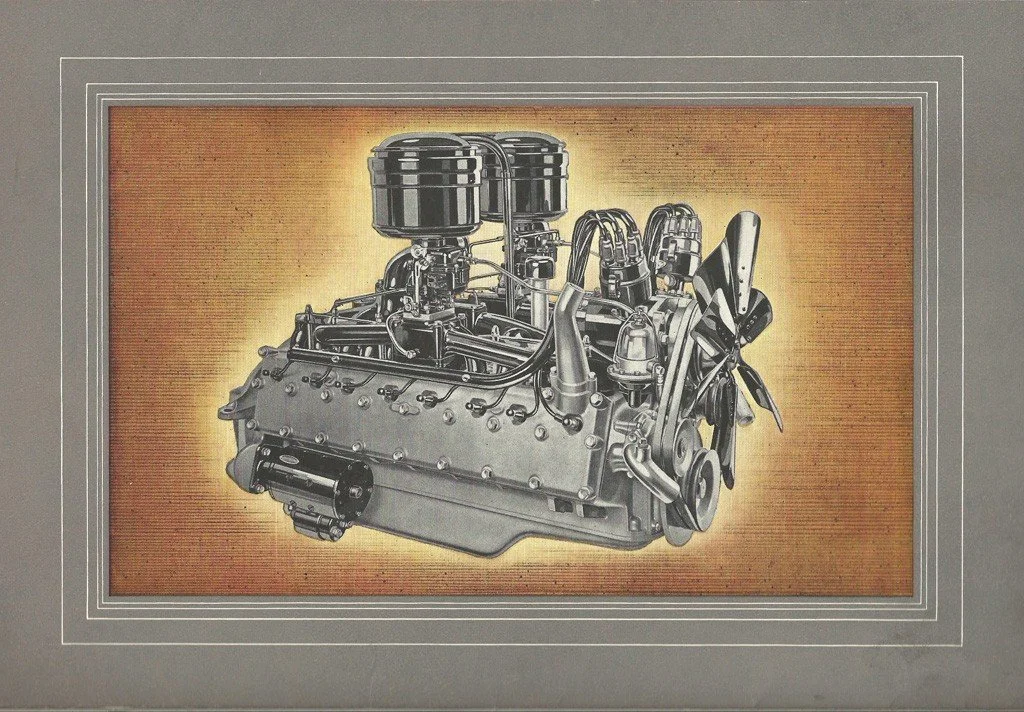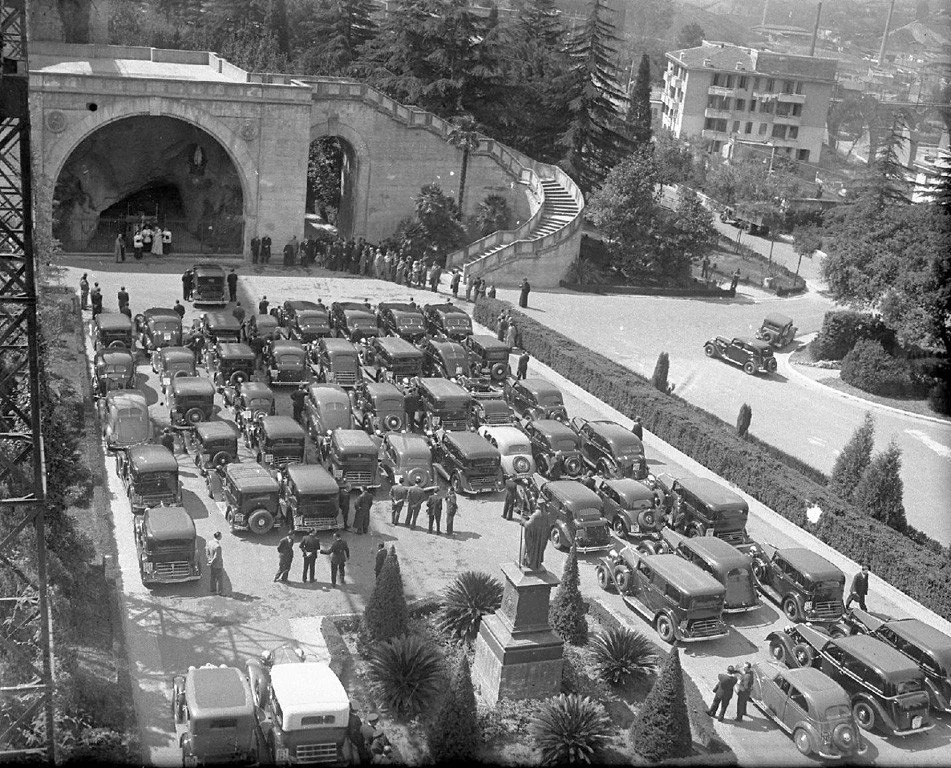-
The history of this Cadillac Limousine Town Car is truly unique. The production of the Town Car version was just 11 specimens and is classified as model 38-9053. Sold new in 1938 to Countess Rosario de Larrechea de Schiffner of Paris, France. Delivered by Cadillac of Alexandria, Egypt. Upon the death of the Countess, the Cadillac was willed to Cardinal Spellman, a dear friend and advisor to President Roosevelt. He accepted the V-16 and commissioned it to the Vatican Motor Pool.
The Cardinal and Pope Pius XII used the car on many occasions. In fact, the Cadillac stayed in the fleet until 1966, when it was sold to the Bulgari Collection.
Today this exclusive Cadillac V-16 Series 90 is one of the most important pieces of the Bulgari Collection in Rome. The Cadillac has only traveled 34,000 miles since 1938 and is in superb condition. A great piece of automotive history. -
Company
General MotorsWheelbase
141inInterior trim
Dark Gray/BeigeBrakes
front and rear drumsMake
CadillacLength
230inEngine
V16 431cidTires
7.50x16Model
Sixteen Limousine - Model 9053Width
77inCarburetor
2 Carter WDOOriginal Price
$7,170Body style
Limousine Town CarWeight
5415lbsHorsepower
185hp @ 3600rpmProduction
11Model year
1938Exterior paint
BlackTransmission
Selective synchro manual 3-speed -
Cadillac unveiled their overhead valve V16 engine in 1930 that solidified the slogan “The Standard of the World.” When first introduced it was a marvel, but by 1938 it had become too expensive to produce and far too bulky to remain in production. So Cadillac engineers came up with a solution; they created a new flathead engine with a much lower profile based on the original V16 unit. It cost less to produce, displaced 431 cubic-inches and produced 185 horsepower. It was basically a twin-eight engine with dual carburetors, manifolds, distributors, coils, fuel pumps and water pumps as well as dual oil bath air cleaners. It was introduced at the October 1937 New York Automobile Show.Cadillac only produced a total of 315 V-16 vehicles in 1938.
Cadillac Series 90 for 1938 was essentially a Series 75 with a V-16 engine. Even though the wheelbase was 330mm shorter, the bodies were equal or larger in all dimensions than previous Cadillac V-16s. This was accomplished by fitting the nearly flat engine low in the frame and partially behind the line of the firewall. V-16s were distinguished from the counterpart V-8s by a coarser pitch eggcrate grille, fender lamps, and streamlined louvers on the hood side panels and all fender skirts. The Series 90 Sixteen was offered in 14 body styles, all by Fleetwood, Cadillac's in-house coachbuilding company. This sharing was enabled by the compact dimensions of the engine, which could be tucked under the firewall, permitting a shorter car without loss of interior space. Its styling was the work of William J. Mitchell, the young designer who had penned the dramatic Sixty Special.
The V16 was given a massive frontal appearance highlighted by a vertical die cast egg-crate grille, thrust forward almost to the bumper. The hood side panels, in a tribute to the 1933 V16, had simple horizontal louvers that were repeated, in inverse order, on each of the four fenders. Sidemount spares were optional, but most cars had them concealed under smooth metal covers. A new "goddess" hood ornament served double duty as the latch for the new "alligator" front-opening hood.
For 1938, Cadillac fielded five models. The first four (Series 38-60, 38-60S, 38-65, and 38-75) were eight cylinders and the 38-90 was a V-16.
Cataloged body styles ran the gamut from two-passenger sport coupes and convertibles to five-passenger convertible sedans and from five-passenger sedans to the seven-passenger formal models. Prices ranged from $5,135 to $7,170. Most popular was the Style 9033 Imperial Sedan, a seven-passenger, six-window car with division partition. A variation on the Imperial Sedan was the Formal Sedan, Style 9033F, with blind rear quarters and a padded leather roof. A few V16 chassis were released to outside coachbuilders. -
Until 1929 the Vatican had no cars at all, relying on traditional horse-drawn carriages. It was only when it was established as a State that it acquired its first automobile, a Graham-Paige. That car remains in the Vatican museum to this day, but the other pre-war limousines that were used for VIP transport – Buicks, Cadillacs and Packards – were disposed of and eventually acquired by The NB Center.
The history of the Vatican limousines is astonishing. The NB Center’s archive includes photographs of several of them – brand new and still unregistered – being blessed by Pope Pius XI in 1938, of the Cadillacs with Pius XII and John XXIII, and of the cars’ use by notable figures including royalty, heads of state and high-ranking diplomats.
Some of these ex-Vatican cars were found in excellent condition; they were not much used, so their engines were near-perfect. Others fared less well; a Cadillac sold off in the early 1960s ended up in the 1970 movie ‘Patton’ and was in poor shape. One of the Packards was also used in movies and had acquired a different engine and transmission, leaving it with two shift levers. Nevertheless the underlying build quality of the cars is very evident; in some cases the chrome brightwork merely needed polishing.
The skilled and committed NB Center teams in Rome have learned a great deal from their colleagues in Allentown, and the repair and restoration of the Vatican cars were all managed entirely in-house by the mechanical staff led by Sergio Caudai and by the skilled bodyshop team of Carrozzeria A. Rizza.
The limousines have all received sensitive restoration, maintaining as much of their precious originality as possible. These exceptional and historic vehicles should stay in Rome, of course, but The NB Center intends to create a special place for them in the city, separate from the rest of the collection, where their intriguing story may be presented in all its fascinating detail.

